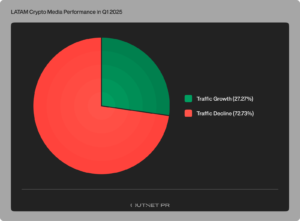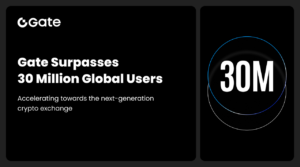
crypto staking: explore the future trends
Cryptocurrencies have revolutionized the financial landscape, and with it comes a wide array of opportunities for investors and enthusiasts. One such opportunity is crypto staking, a process that allows individuals to earn passive income by participating in blockchain networks. In this article, we will delve into the world of crypto staking, exploring its mechanics, benefits, and future trends.
Introduction
The rapid growth of cryptocurrencies has fueled the development of various consensus mechanisms, including proof-of-work (PoW) and proof-of-stake (PoS). While PoW requires miners to solve complex mathematical problems to validate transactions, PoS allows participants to validate blocks based on the number of coins they hold and are willing to “stake.” This process is known as crypto staking.
What is Crypto Staking?
Crypto staking involves locking up a certain amount of cryptocurrency in a wallet to support the operations of a blockchain network. By doing so, participants contribute to network security and decentralization while being rewarded with additional coins. Staking is typically done through dedicated staking platforms or wallets that support staking functionalities.
How Does Crypto Staking Work?
To participate in crypto staking, users need to acquire a supported cryptocurrency and store it in a compatible wallet. Once the coins are in the wallet, they can be “staked” by initiating the staking process. The staked coins are temporarily locked, and participants become eligible to earn rewards based on the amount they have staked and the duration of their stake.
Benefits of Crypto Staking
Let’s explore some of the advantages that make staking an attractive option for cryptocurrency enthusiasts:
- Passive Income: One of the primary benefits of crypto staking is the ability to earn passive income. By staking your coins, you become an active participant in the blockchain network and receive additional tokens as rewards. This provides you with a regular income stream without the need for active trading or mining.
- Network Security: Staking plays a crucial role in maintaining the security and integrity of blockchain networks. When you stake your coins, you contribute to the decentralization of the network and actively participate in the consensus mechanism. This helps protect the network from potential attacks and enhances its overall security.
- Alignment of Interests: Staking encourages participants to align their interests with the success and stability of the network. Since stakers have a vested interest in the value and growth of the cryptocurrency they stake, they are more likely to support projects that have long-term potential. This alignment promotes a healthier and more sustainable cryptocurrency ecosystem.
- Reduced Energy Consumption: Unlike traditional mining, which requires substantial computational power and energy consumption, staking is a more energy-efficient alternative. It operates on a proof-of-stake consensus mechanism, which significantly reduces the environmental impact associated with crypto mining. Staking allows individuals to contribute to blockchain networks while minimizing their carbon footprint.
- Lower Entry Barrier: Staking provides a relatively low entry barrier compared to other forms of cryptocurrency investment. In many cases, you can start staking with a modest amount of tokens, allowing individuals with limited resources to participate in earning rewards and supporting the network.
Popular Cryptocurrencies for Staking
Several cryptocurrencies support staking, each with its unique features and rewards. Ethereum (ETH), Cardano (ADA), Polkadot (DOT), and Tezos (XTZ) are among the popular cryptocurrencies that offer staking opportunities. These projects provide stakers with various incentives, such as network governance rights, reduced transaction fees, and potential capital gains.
Staking vs. Mining
Staking and mining are two distinct methods of validating transactions on blockchain networks. While mining relies on computational power and energy consumption, staking is a more energy-efficient alternative. Stakers can participate in securing the network and earning rewards without the need for expensive mining equipment.
Future Trends in Crypto Staking
As the cryptocurrency industry continues to evolve, several future trends are shaping the landscape of crypto staking. One such trend is the emergence of decentralized staking platforms. These platforms enable users to stake their coins directly, eliminating the need for intermediaries and enhancing security.
Decentralized Staking Platforms
Decentralized staking platforms leverage smart contracts to automate the staking process and provide users with more control over their staked assets. By removing intermediaries, these platforms enhance transparency and reduce fees, making staking more accessible to a broader audience.
Integration with DeFi
DeFi (Decentralized Finance) has gained significant traction in recent years, offering various financial services on blockchain networks. The integration of staking with DeFi opens up new opportunities for stakers. Staked assets can be utilized as collateral for loans, providing liquidity while still earning staking rewards.
Proof-of-Stake 2.0
Proof-of-Stake 2.0 (PoS 2.0) is an evolution of the traditional PoS consensus mechanism. PoS 2.0 aims to address some of the limitations of the current PoS systems, such as the “nothing at stake” problem and the potential for centralization. This upgraded version introduces additional security measures and economic incentives, further enhancing the viability and efficiency of crypto staking.
Environmental Considerations
With growing concerns about the environmental impact of cryptocurrencies, many projects are exploring ways to minimize their carbon footprint. Proof-of-Stake consensus mechanisms, including staking, offer a greener alternative to energy-intensive mining, making them an attractive choice for environmentally conscious investors.
Regulatory Landscape
As cryptocurrencies gain mainstream adoption, regulators worldwide are developing frameworks to govern their use and mitigate risks. The regulatory landscape surrounding crypto staking is evolving, with authorities seeking to strike a balance between innovation and investor protection. Stakers should stay informed about the legal and tax implications of their staking activities.
Risks and Challenges in Crypto Staking
While crypto staking presents opportunities, it also comes with risks and challenges. One significant risk is the volatility of cryptocurrency prices. Stakers need to carefully consider the potential fluctuations in the value of their staked assets. Additionally, there is a risk of slashing, which occurs when a participant behaves maliciously or goes offline for an extended period, leading to a penalty and potential loss of staked funds.
Tips for Successful Staking

To maximize the benefits of crypto staking and ensure a successful staking experience, consider the following tips:
- Thorough Research: Before staking your coins, conduct thorough research on the project and cryptocurrency you intend to stake. Understand its fundamentals, team, roadmap, and community. Evaluate the project’s viability and potential for long-term growth.
- Diversify Staked Assets: Avoid putting all your eggs in one basket. Diversify your staked assets across multiple cryptocurrencies or projects. This helps mitigate the risk associated with a single investment and ensures that you can benefit from various staking opportunities.
- Stay Informed: Stay updated with the latest developments and upgrades in the staking ecosystem. Follow project announcements, news, and community discussions. Being well-informed allows you to make informed decisions and adapt your staking strategy accordingly.
- Choose a Reliable Staking Platform: Select a reliable staking platform or wallet that supports the cryptocurrency you want to stake. Ensure the platform has a good reputation, strong security measures, and a user-friendly interface. Research and compare different platforms before making a decision.
- Consider Hardware Wallets: Consider using a hardware wallet for enhanced security when staking. Hardware wallets store your staked assets offline, providing an additional layer of protection against hacking attempts or online vulnerabilities.
- Monitor Market Conditions: Stay aware of market conditions and trends. Keep an eye on the price movements of the cryptocurrency you have staked. Evaluate the potential risks and rewards associated with the market and adjust your staking strategy accordingly.
- Evaluate Staking Rewards: Compare the staking rewards offered by different projects or platforms. Look for projects with competitive rewards and attractive incentive structures. Consider both the quantity of rewards and any additional benefits, such as reduced transaction fees or network governance rights.
- Be Mindful of Staking Duration: Understand the staking duration and any lock-up periods associated with your chosen cryptocurrency or platform. Evaluate your willingness to commit your funds for the specified duration and ensure it aligns with your investment goals.
Conclusion
Crypto staking offers an exciting opportunity for cryptocurrency enthusiasts to earn passive income while contributing to the security and decentralization of blockchain networks. As the industry progresses, future trends such as decentralized staking platforms, integration with DeFi, and the development of PoS 2.0 are expected to shape the landscape of crypto staking. However, it’s crucial for stakers to remain aware of the risks and challenges involved and adopt best practices to ensure a successful staking experience.
Frequently Asked Questions (FAQs)
What is the minimum amount required for staking?
The minimum staking amount varies depending on the cryptocurrency and staking platform. It is advisable to check the specific requirements of each project before staking.
Can I unstake my coins at any time?
Unstaking periods and lock-up durations differ among cryptocurrencies and staking platforms. Some projects may impose restrictions on the duration of stakes, while others allow flexibility in unstaking. Refer to the guidelines provided by the project to understand the unstaking process.
Are staking rewards taxable?
Tax regulations regarding staking rewards vary by jurisdiction. It is recommended to consult a tax professional to understand the tax implications of staking in your country.
Can I stake multiple cryptocurrencies simultaneously?
Yes, you can stake multiple cryptocurrencies simultaneously, provided the staking platform supports those particular assets.
What happens if the cryptocurrency I staked experiences a significant price drop?
When the value of a staked cryptocurrency drops, your staked assets may be at risk. It is essential to consider the potential market volatility and evaluate your risk tolerance before staking.
I have worked in the cryptocurrency industry for over 5 years and have written numerous articles on the subject. I am well-versed in all aspects of cryptocurrencies and blockchain technology, and am an expert in the field.








